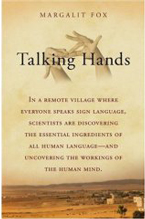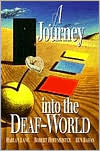This is pretty funny. It’s also very interesting if you’re interested in other sign languages of the world besides ASL. It’s fun to recognize iconic signs and also to see how BSL has some seemingly really strange arbitrary signs, when you’re used to ASL.
A Humorous Coming Out Story in BSL
December 18, 2008Extreme Blog Guilt
December 17, 2008I’ve been gone for so long I’m embarrassed about it! How could I let this happen?!
Well, I’m sure I’ve been missing a lot of news in the Deaf World. My husband and I did spend a month in Arizona and when we returned I got a second job teaching ASL!
Now that you all know I’m a Sign Language teacher, I’m even more intimidated about posting my first VLOG! – which I’ve been wanting to do for a long time.
Oh, well. I’ll just have to bite the bullet and do it.
Now, someday it’s going to come out that I’m not certified by the American Sign Language Teachers Association, nor do I have K-12 certification. How is it possible that I teach ASL then? I teach for a Charter School that supplements Home Schoolers’ programs. However, I am trained in the ethics of being a Sign Language teacher through my Interpreter Training Program and I also hold a Master’s Degree in Linguistics, so I’m fully qualified to teach at the level I am currently teaching. Furthermore, I’m improving every day now that I spend all my time thinking about how to teach concepts in ASL!
All in all, this has been a truly happy event in my life that will connect me more with the Deaf World and with my passion for Sign Language. I have also met a new friend here in Colorado who has several close Deaf friends and will take me to some local events in the future.
In other news, I’m trying to think of a new name for this blog! (For now) I’m no longer aspiring to be an interpreter. I simply want to continue learning and teaching ASL and socializing with Deaf people.
So…We’ll see what I can come up with in the days to come!
Will Return Shortly….
August 20, 2008I want to apologize to my few devoted readers for my extended absence. I went through a big move in June and then the summer flew by with all the unpacking and visits from family. I am now on a Navajo reservation in Arizona for the month of August and don’t really have much computer access.
But I plan to returned in September when I get home. I’ve been storing up a few things to talk about.
Cheers! And thanks for reading and commenting on my articles….
Old News, Perhaps Still Relevant?
May 17, 2008(Image taken from barr productions via fookembug)
Okay, so this article, Hear No Evil, by Sara Minogue, was posted in the online magazine This, in the May-Jun 2005 issue, so it is definitely old news. I still think it poses a lot of interesting questions for interpreters.
Here is the opener:
Deaf since childhood, Bobby Suwarak grew up in isolation, able to understand no known language. Now charged with a crime, he has presented Nunavut’s court system with a problem. But the form of charades he uses to communicate is being used by deaf Inuit across the territory, leading one researcher to call for the court to recognize it too
Ignoring the very troublesome use of the word “charades” to refer to home-signs (which is a whole discussion in itself and surely burns a lot of people up) there is a lot in this article worth discussing, i.e. how to deal with a situation like this professionally and whether in this particular situation, the interpreters should all learn Inuit Sign Language, or should just try to teach everyone ASL. But while trying to address the question of whether to start teaching ASL in this part of Canada, the author makes a huge blunder! (Notice my emphasis below.)
[McDougall] urged the Government of Nunavut to create a court interpreter training program in ISL with the goal of producing impartial legal interpreters for deaf Inuit. But that never happened.
A reasonable person might ask: Does it even matter? In 2000, MacDougall estimated that there were 155 deaf people in Nunavut, of whom approximately 30 percent—perhaps 47 people—are untrained in ASL. A simpler, and cheaper, solution would be to train these people to use ASL. But how? By sending them to cities in southern Canada? Many Inuit still associate the South with medical emergencies and residential schools. Furthermore, ASL is based on the English language, and the dominant language in Nunavut is Inuktitut. In many small communities, 90 percent of people speak Inuktitut as a first language, and many speak limited English. Learning ASL would not only require deaf Inuit to first learn English, using it would effectively cut them off from their communities.
What!? Don’t you just want to smack this author? How can a person write an article about sign language without doing at least a bit of research on the subject. Where are the fact checkers?
Of course we all know that ASL in fact came from LSF (langue des signes française), not BSL. But aside from that, sign languages are not based on spoken or written languages in the first place. It is ludicrous to think that Inuit people would first have to learn English before they could learn ASL. Am I wrong? Yes, there is a continuum between more English based signing (PSE and all that) and ASL because the Deaf people in America are often bi-lingual and interact with English speakers on a daily basis. This is a modification of pure ASL due to language contact, but the language itself is in no way, shape, or form related to English. The bottom line is that ASL could be translated and taught people of any native language without teaching them English first.
And finally, it is just plain irresponsible for a magazine to print fallacious material about a language that a communitty of people must constantly fight to defend. Media of the world, Deaf issues are controversial, do your homework before you write about them!
Deaf-Friendly Cities Survey
May 9, 2008Hmm, this is interesting. I just got an email about a research project: “Deaf-Friendly Cities in the U.S.” by Deaf411, Inc. Here is what they have to say about themselves and their project:
Deaf411, a marketing and public relations company, has launched an internet video website with an online survey. This survey is part of their research to compile a report of “Deaf-Friendly Cities in the U.S.” which will be made available to interested consumers free of charge.
This research will involve identifying criteria of what a deaf person living in any city needs in terms of accessibility and general services; compilation of services and resources needed in that city, identifying and listing cities with proven track records of providing such services; attitudinal considerations, and other factors involved in determining what constitutes an ideal city that is fully accessible.
Areas covered in this project will include employment, government, business, and community services and opportunities. In the video at Deaf411 online, Michel Swafford describes some factors that a consumer who is deaf or has a hearing loss face when they move to a new city. Findings of the online survey and correlating research will provide a powerful tool for professionals and businesses with clientele who are pre-dominantly deaf or have a hearing loss.
The project is expected to take six months. More information on the “Deaf-Friendly Cities in the U.S.” project, the online survey, and the upcoming report is now available at Deaf411 online.
Personally, I think this seems like a worthwhile project. I’d be interested in knowing more about the Deaf scene in a new city to which I might move.








